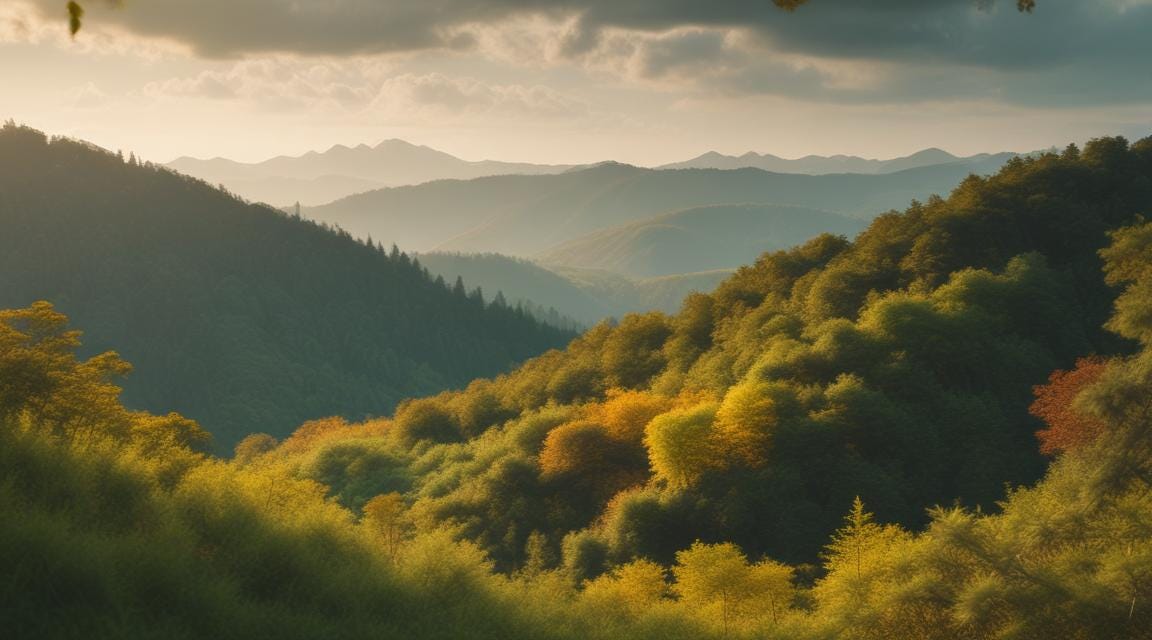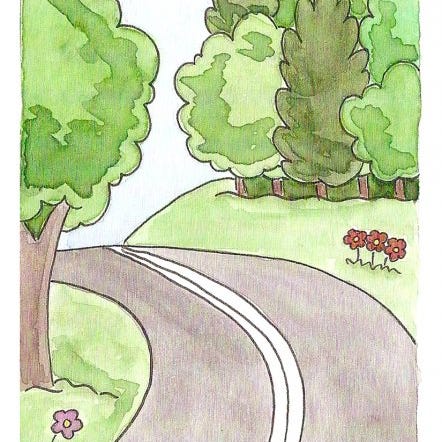There’s a melancholy in the air, an ongoing sounding off of crickets and grasshoppers to mark the final days of summer. A consistent breeze blows puffy clouds across the sky and provides a reprieve from the humidity and heat as it brushes across my skin. Sycamore leaves blow in the wind, sprinkling the more-brown-than-green yard with flecks of gold. I see yellow in the tops of the tulip poplar on the hillsides.
I close my eyes as I sit in the porch swing, comforted somehow by the breeze and the chirping, reminding me of the scene from Titanic when the Irish mom comforts her frightened children. “All will be forsooth.” I originally interpreted that to mean “all will be okay,” but now looking at the archaic definition of the word, it means “in truth.”
All will be truth.
For some reason, that concept brings comfort as well. These days, each of us has our own truth. (See The Truth of our Assumptions to reckon with yours.)
Faith almost always implies certitude even where there is no evidence or proof. “Almost always,” Miriam-Webster says. I would venture to say that’s a high estimate of the matter. I think, more than anything, humans struggle with faith. And Gen Xers, like me, have a cultural lack of trust. We’ve spent a lifetime pretending that everything is fine, even when the space shuttle exploded, when the AIDS epidemic took our friends, when the dot-com bubble burst, when the twin towers fell, and the list goes on — Waco, Jonestown, Watergate, Three Mile Island, Rodney King, Exxon Valdez, Covid.
We are an entire generation of cynics, knowing faith and trust are contrary to what we have witnessed in our lives. Over and over we have had to choose to continue despite the condition of the world around us. Without any reasoning or logic, we still (often but not almost always) hope for the best.
All will be forsooth.
Or it won’t. Either way, we’re pretty much stuck here.
The fancy way of saying, “It is what it is.”
No wonder we’re angry. (See Managing Your Anger for help with that.)
I cling to the comfort nature provides me. I make a point to enjoy the sounds of late summer, knowing winter is nothing more than a conversation of crows. I make a point to close my eyes and breathe in the breezes, embracing the miracle of remote work that allows me to earn my keep from the porch swing.
I’m old enough to reflect on how our country has changed over the years, for the good and the bad, knowing there is no going back. I’ve been on this land long enough to see also those changes — the absence of Ash trees, the brown in the grass, the yellow in the Tulip Poplar, the significant shift in the growing season, the increase in population of all things that sting.
It draws up the same melancholy as the late summer song of the insects, an innate, inherent, instinctual longing for what we are losing, what we have lost.
And yet, faith whispers, “All will be forsooth.” We are no more than the chirping crickets in this Universe, who relish in the present moment, no more or less than the stars and stardust in the night sky.
(Side Note: For a great place to immerse yourself in stargazing, visit Calhoun County’s Night Sky Park.)
In the current heat and humidity, I do have to admit that I look forward to temperate autumn, my favorite season of the year — up until the evening daylight is completely lost. I’m beginning to feel the back-to-school excitement, beginning to harvest tomatoes in my late-potted garden, and beginning to reap the benefits of the season. And yet…
Now, at the end of the week, the tulip poplar have more yellow than green, and the green expanse of hillsides surrounding the farm has more patches of brown and rust. In just a few hot and humid days, even with a solid mid-week downpour, the season of lush green is gone.
There’s that melancholy again; the crooning insect song now accompanied by changing colors. My teacher-friend went back to school today, and in her goodbye, on her last visit to enjoy our pool she said, “I just have to remind myself that it doesn’t mean that summer is over.”
It isn’t over, but summer has peaked and is waning, and my melancholy over that fact is not quite sad, but accepting. This is the cycle, and though shifted (See This is Not My Grandfather’s Garden), it still exists. In a world that seems to have gone topsy-turvy, some things still make sense.
Have you visited the Two-Lane Renaissance website lately? Starting this month, we added a sub-section to the e-zine for local issues and citizen journalists and began pulling columns from the archives of Two-Lane Livin’ Magazine. Although I’m still working on the logistics of it all, these new features won’t always be sent to you via your email (or Substack) subscription.
In this transitional period, I want to make sure you haven’t missed anything.
From the archives of Two-Lane Livin’:
From this Summer Season:
From the Launch of Two-Lane Local:
The flurry of local fussing has also spurred a collection of popular themes for hats, buttons, t-shirts, and more from our print shop: Two-Lane Prints. If you haven’t been following the local pummelings, some of these designs may make no sense to you, but many of them stand well alone even if you have no clue:
Although we have been approached by interested advertisers, our business model is not set up for any advertising other than in-house options. (One, I don’t want to be financially tied to any local advertising influence, and two, I hate selling ads.) You can support this endeavor with a paid subscription, by shopping in our print shop, which features in-house designs as well as Appalachian themes and creations by independent artists. You can also shop our bookstore, Two-Lane Books, which features Appalachian authors and themes and supports independent bookstores, who provide the books for your orders.
Thank you for reading and following Two-Lane Renaissance. I’m so glad to have you here with me, and I hope, in a season of politics, self-appointed pundits, and yellowing leaves in the trees, you find hope and reasons to smile during this melancholic season.
All will be forsooth.







